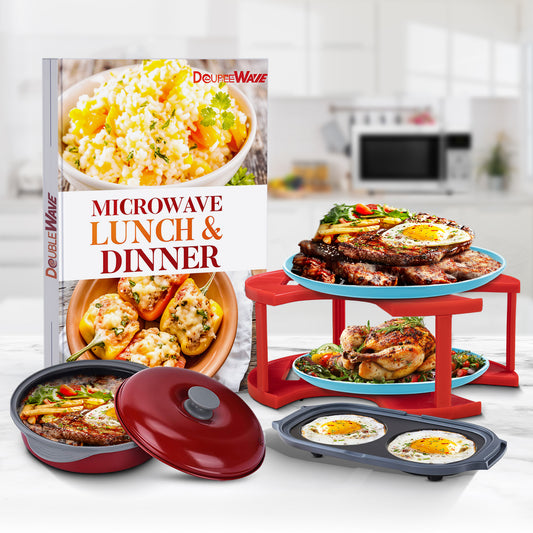Metal in a microwave can lead to arcing, reflection, and uneven cooking, posing fire and appliance damage risks. While some microwave-safe metal containers and ready-to-heat products are exceptions, it's wise to avoid metal unless your microwave's manual approves.
Metal in a Microwave Oven Can Be Problematic for Several Reasons:
1. Arcing:
Microwaves can cause currents of
electricity to flow through metal. Thin pieces of metal, like the tines of a
fork or the metal filigree on some decorative plates, can act as antennae.
These might produce high voltage, leading to sparks or arcs. These sparks can
potentially start a fire or damage the microwave's interior or its electronic
components.
2. Reflection:
Microwaves bounce off metal
surfaces, much like a ball bouncing off a wall. If the microwaves are not
absorbed by the food (or another appropriate substance in the microwave) and
instead keep reflecting off metal surfaces, they can create standing waves that
might damage the microwave's magnetron (the component that produces the
microwaves).
3. Uneven Cooking:
Metal can shield parts of
the food from the microwaves. This means that if you have food wrapped in foil,
the part under the foil might not cook, while the exposed part might get cooked
or even overcooked.
However, Not All Metal Is Strictly Forbidden in Microwaves:
1. Microwave-safe Metal Containers:
Some microwaves come with metal racks or shelves, specifically designed to be safe
for that particular microwave model. These racks can help with cooking multiple
dishes at once or can be used for grilling in combi ovens.
2. Certain Ready-to-Heat Products:
Some ready-to-heat products come in containers that have thin metal films or edges.
These are designed for short bursts of heating and are safe when used as
directed. Always follow the package's instructions.
3. Small Amounts of Aluminum Foil:
If used correctly, a small amount of aluminum foil can be used to shield portions of
food that might overcook. However, the foil should be smooth (not crinkled,
which can cause arcing) and should be kept at least an inch away from the
microwave's walls.
Still, as a general rule, it's often best
to avoid placing metal in the microwave unless you're certain it's safe. Always
consult your microwave's user manual for guidance on what materials can and
cannot be used safely.









